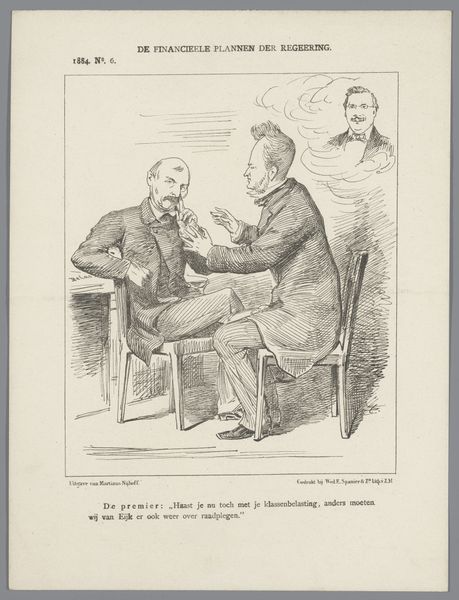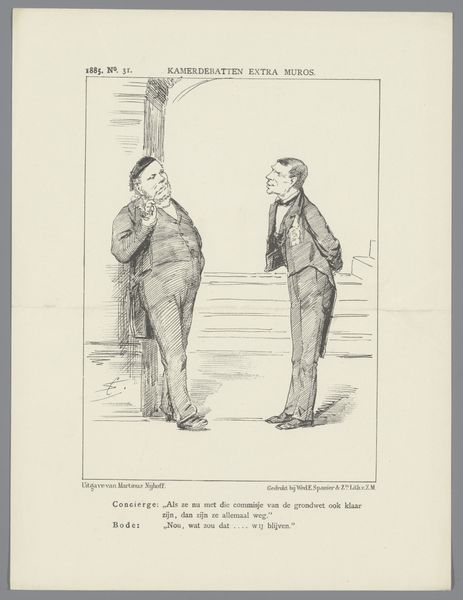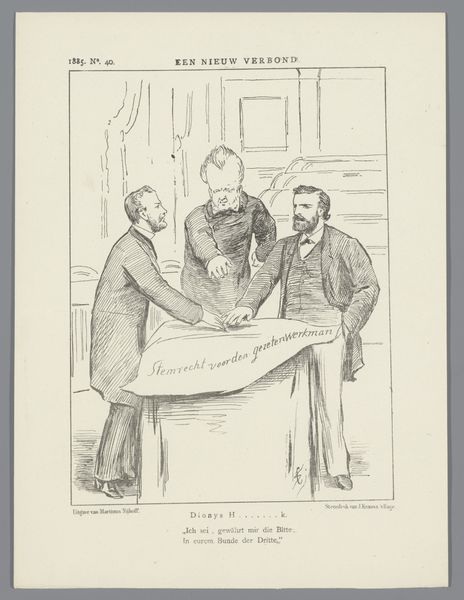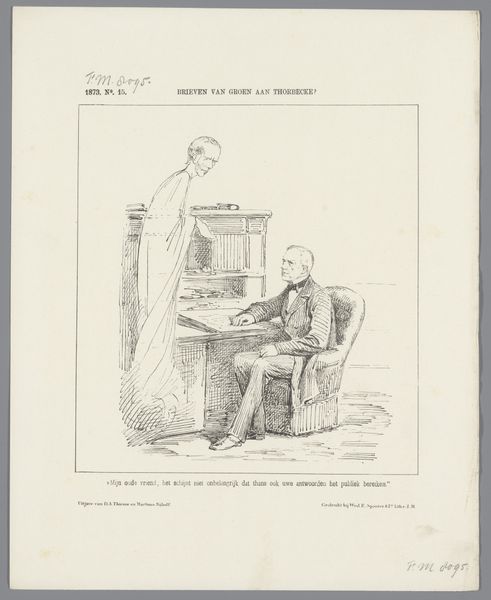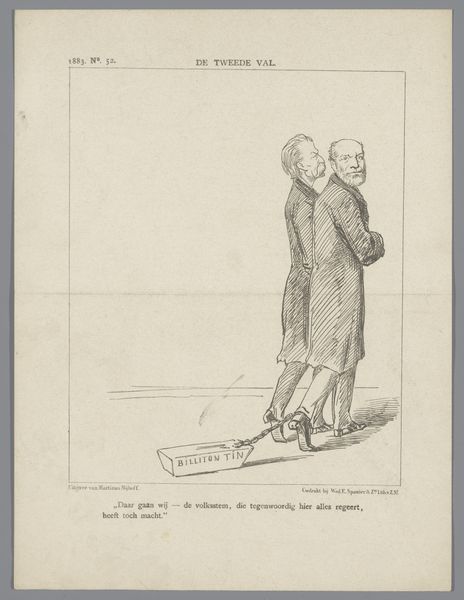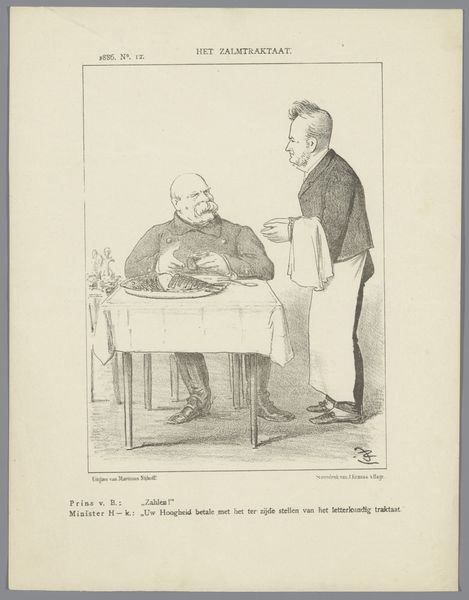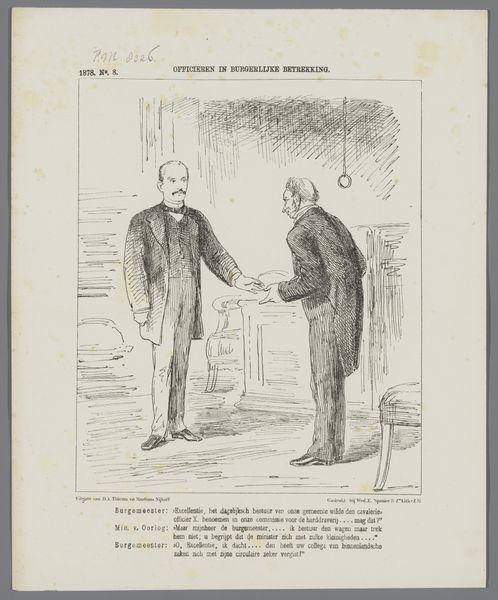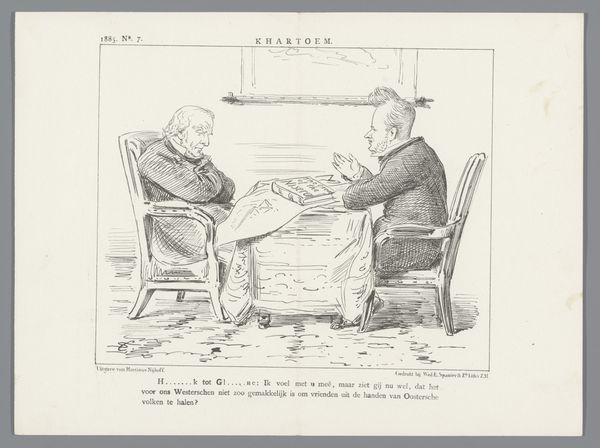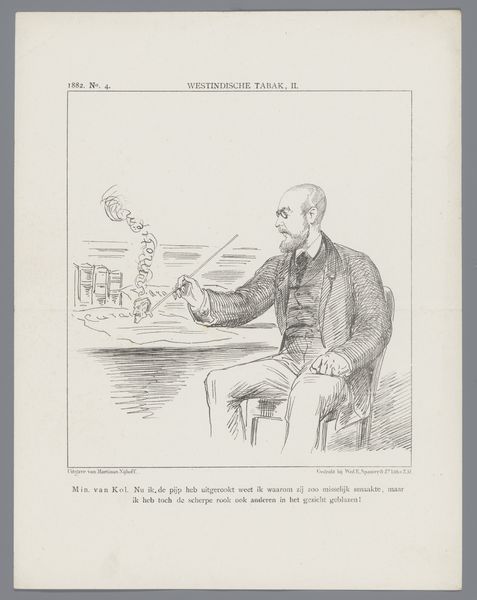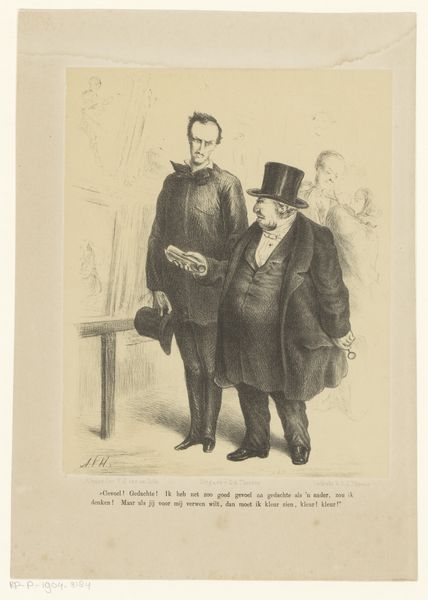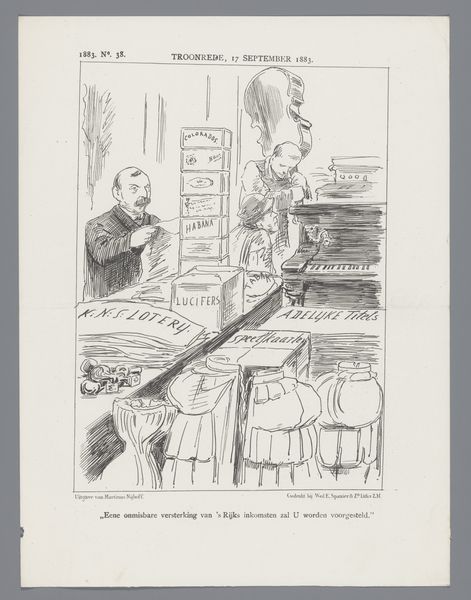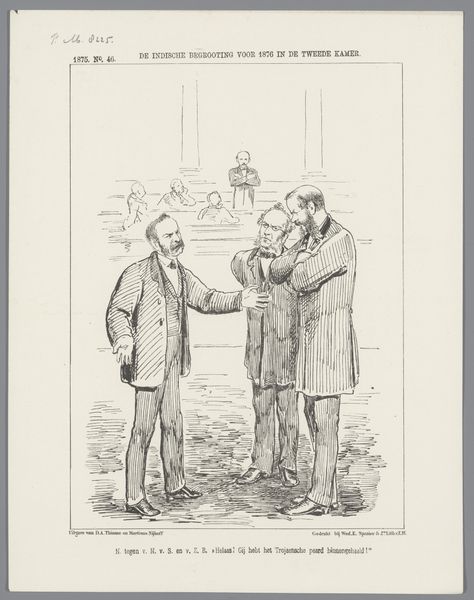
drawing, pen
#
drawing
#
16_19th-century
#
caricature
#
pen
#
genre-painting
Dimensions: height 275 mm, width 215 mm
Copyright: Rijks Museum: Open Domain
Curator: Today, we’re looking at an intriguing drawing called "Politieke spotprent over de vrije handel, 1881,” which translates to “Political Cartoon about Free Trade, 1881.” It comes to us from the hand of Johan Michaël Schmidt Crans. Editor: It has such an assertive line quality; you can almost feel the scratch of the pen. The scene feels quite confined, doesn't it? Deliberately so, I think. The weight and scale of the figure on the left contrast against the smaller character lounging on the right; it emphasizes power versus perhaps passive agreement. Curator: Precisely. This pen drawing presents a moment frozen in political discourse. Notice the figure on the left. His imposing presence, combined with the beer stein and long pipe, is quite clearly intended to represent Bismarck. The paper labeled Java hints at colonial trade. Editor: The "Java" placard acts like a symbolic landscape. The horizon is just a squiggly line. Even here the artist signals tensions inherent to free trade. Curator: Note the difference in how each figure relaxes—one rigid, holding a beer, and the other reclining with a cigarette. These suggest character judgments: a boisterous traditionalism set against... what? Editor: ...Perhaps a more modern, relaxed decadence? Both are framed by these highly active, almost frantic, lines that build up to become mass. It's almost as though the drawing strains to contain the figures themselves. And the varying intensity of the linework directs the eye. Curator: Political cartoons rely heavily on symbolism to convey complex ideas swiftly. The specific choice of details helps express national character through the use of recognizable cultural elements. This particular artist seems invested in using traditional imagery as shorthand. Editor: In that context, the work does more than present an idea. Its method embodies the very push and pull of contrasting social forces at play. The careful compositional strategies guide my interpretation and enhance the reading of the central argument. Curator: Indeed. Looking closer, it really encapsulates a fleeting historical viewpoint—frozen forever in a swirl of lines and cultural meanings. Editor: A powerful example of how formal elements work in perfect conjunction with broader social themes.
Comments
No comments
Be the first to comment and join the conversation on the ultimate creative platform.
